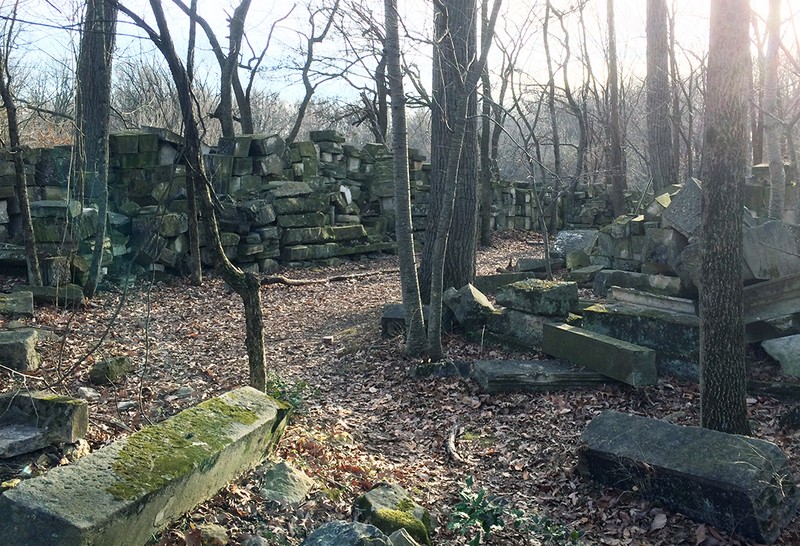Capitol Stones
Introduction
Text-to-speech Audio
Images
Capitol Stones, courtesy of Architect of the Capital blog (reproduced under Fair Use)

Backstory and Context
Text-to-speech Audio
In 1954, President Dwight D. Eisenhower appointed J. George Stewart as Architect of the Capitol. He was a former Delaware Congressman and not a trained architect. In 1958, Stewart advocated for a renovation of the east façade of the Capitol building to create additional office space and a subway terminal. Additionally, he wanted to replace the sandstone with marble. Because of his lack of expertise, the proposal was not popular, but Speaker of the House Sam Rayburn supported the renovation and it went forward.
The demolition and reconstruction took place in 1958 and 1959, with some elements of the architecture being preserved and others discarded. The East Front was taken apart and its portico dismantled. Its columns, which dated back to 1828, were first sent to the Capitol Power Plant and then the National Arboretum. Discarded stones were left in Rock Creek park.
The sandstone and marble blocks in the park were part of the Capitol in the 1800s, with some possibly as old as 1818. The blocks offer a history of nineteenth-century quarrying, building, and carving techniques. Some of the stone is unmarked masonry, but there are some decorative pieces as well. The ownership of the stones is unclear, and the piles have possibly grown larger as a result of other Capitol renovations.
Sources
Blitz, Matt. The Historic Capitol Stones are Hidden in Plain Sight, The Washingtonian. August 7th 2015. Accessed April 26th 2020. https://www.washingtonian.com/2015/08/07/the-historic-capitol-stones-are-hidden-in-plain-sight/.
Carter, Elliott. Capitol Stones in Rock Creek Park, Architect of the Capital. September 5th 2016. Accessed April 26th 2020. https://architectofthecapital.org/posts/2016/5/30/capitol-stones.
davidplotz1. The Capitol Stones, Atlas Obscura. Accessed April 26th 2020. https://www.atlasobscura.com/places/the-capitol-stones-washington-dc.
https://architectofthecapital.org/posts/2016/5/30/capitol-stones
